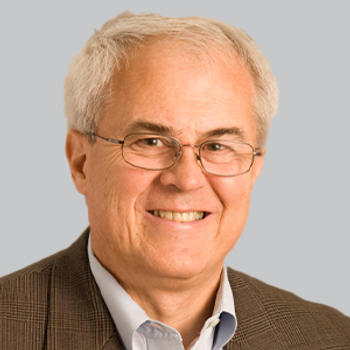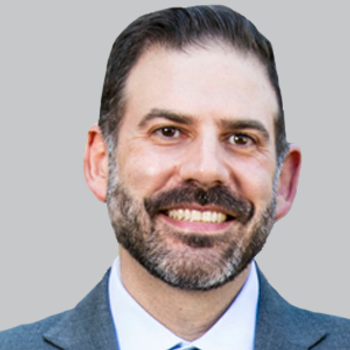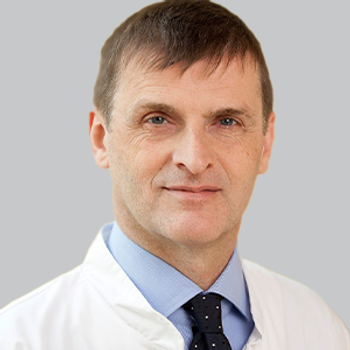
World Movement Disorders Day: Octave’s Impact on Parkinson Disease Research
Jim Eubanks, PhD, national director of medical affairs at Octave, provided thoughts on the company’s $10 million grant from The Michael J. Fox Foundation for Parkinson’s Research and highlighted the importance of awareness for movement disorders like Parkinson disease.
World Movement Disorders Day, held November 29, 2023, is an annual event to raise awareness about
Recently,
Following the news, principal investigator Jim Eubanks, PhD, national director of medical affairs at Octave, had a conversation with NeurologyLive® about the grant, sharing his reaction and the future plans for research. Eubanks also talked about how developing a common biological language expedites the creation of new therapies for PD and the role that biomarkers play in overcoming the challenges of proving the effectiveness of disease-modifying therapies for patients with PD. Additionally, he spoke about why movement disorder awareness is crucial for policy decisions, and how it can guide research investments.
NeurologyLive: What was your initial reaction to receiving the grant?
A cascade of feelings in rapid succession: Tremendous excitement, followed by deep gratitude, then an awesome sense of responsibility to the PD community.
How will this grant impact the future in PD?
In the near term, we will work with the research community to develop a common biological language that will expedite the development of new therapies. At the same time, we will develop a tool–ideally a simple blood test–that clinicians can use to personalize the care for each person living with PD.The guiding principle is that, by understanding the unique biology of each patient, we can deliver the right therapies at the right time, to achieve the best possible outcomes.
What is a major unmet need that remains among patients with PD?
The most acute need is for disease modifying therapies that slow or stop the progression of PD. Despite tremendous efforts in this area, and many breakthroughs in the scientific understanding of PD pathology, we still can’t say unequivocally that any therapy slows the progression of PD. It’s surprisingly difficult to show that you’ve prevented progression. We know it’s a high bar, but we still don’t know with any degree of precision exactly where the bar is, and how we’ll know when we’ve cleared it. We think the key will be to develop objective biomarkers that can measure all the diverse biological processes underlying progression, and tie them to outcomes that are meaningful to patients with PD. By more clearly defining the goals, we can speed up the development of new therapies.
How does collaborative work help to progress care for patients with neurodegenerative diseases like PD?
Collaboration is absolutely essential in at least 2 ways: First, we are going into this venture recognizing that we are standing on the shoulders of scientific giants. Their earlier work gave us the key insights that will form the foundation of our biomarker discovery efforts. Indeed, our role will be to help put the pieces together, using more recently developed innovations in data science, but with a firm grounding in biology, and informed by clinical need.
Second, we need a great deal of data and samples to be able to find the patterns and ‘crack the code’ of the biology underlying PD progression. We know this from having developed the Multiple Sclerosis Disease Activity Test in which we needed data from over 3000 patients. We are grateful to MJFF for giving us access to these resources–and even more grateful to the patients who have participated in these studies!
What is the importance of movement disorder awareness?
Awareness of movement disorders is critically important from a policy perspective. With PD in particular, knowing the individual and societal burden–and the fact that it is increasing with an aging population–can help direct research investments toward finding better treatments. Also, understanding the environmental risk factors for PD, such as pesticide use, can help guide policy toward minimizing exposure.
What are the ongoing efforts now to address the needs of these patients and increase awareness other than the grant research?
As we develop these tools that will be used for individualizing PD treatment, it’s critical to talk to patients and understand what’s important to them. For example, at what point does knowledge of your disease at a detailed level give you power over it, and at what point is this knowledge a burden, particularly if we don’t currently have a way to stop the disease processes we are measuring.
What other advice would you give to clinicians in helping them to advocate more for their patients?
Parkinson is not just a movement disorder. It is critical to treat the whole person, and keep an open ear to what is really bothering your patients as this will vary. There are a myriad of non-motor symptoms which patients report as being as least as bothersome as their movement difficulties. If PD were all about dopamine, then replacing dopamine (through Levodopa) would effectively be a cure for PD, which we know is not the case. Thinking more openly will help address patient needs in the near term and will be the key toward finding better therapies.
What are you looking forward to the most in the movement disorders field in the future?
I look forward to breaking free of the therapeutic inertia in PD; stemming from a belief that what we have currently is good enough, and from a fear of moving forward because of past failures. We are at an incredible juncture now, where we have the tools and knowledge to make a historic impact on the lives of patients living with PD.
Transcript edited for clarity.
REFERENCES
1. Octave® Bioscience, Inc. Receives $10 Million Grant from The Michael J. Fox Foundation to Develop and Validate Multi-Analyte Protein Biomarker Test for Parkinson’s Disease Assessments. News Release. Published November 15, 2023. Accessed November 29, 2023. https://www.biospace.com/article/releases/octave-bioscience-inc-receives-10-million-grant-from-the-michael-j-fox-foundation-to-develop-and-validate-multi-analyte-protein-biomarker-test-for-parkinson-s-disease-assessments/?s=105
Newsletter
Keep your finger on the pulse of neurology—subscribe to NeurologyLive for expert interviews, new data, and breakthrough treatment updates.









































